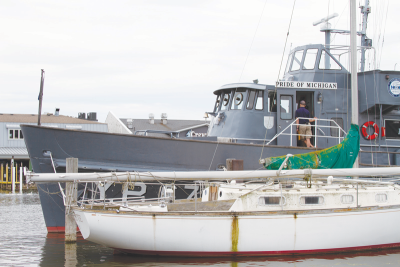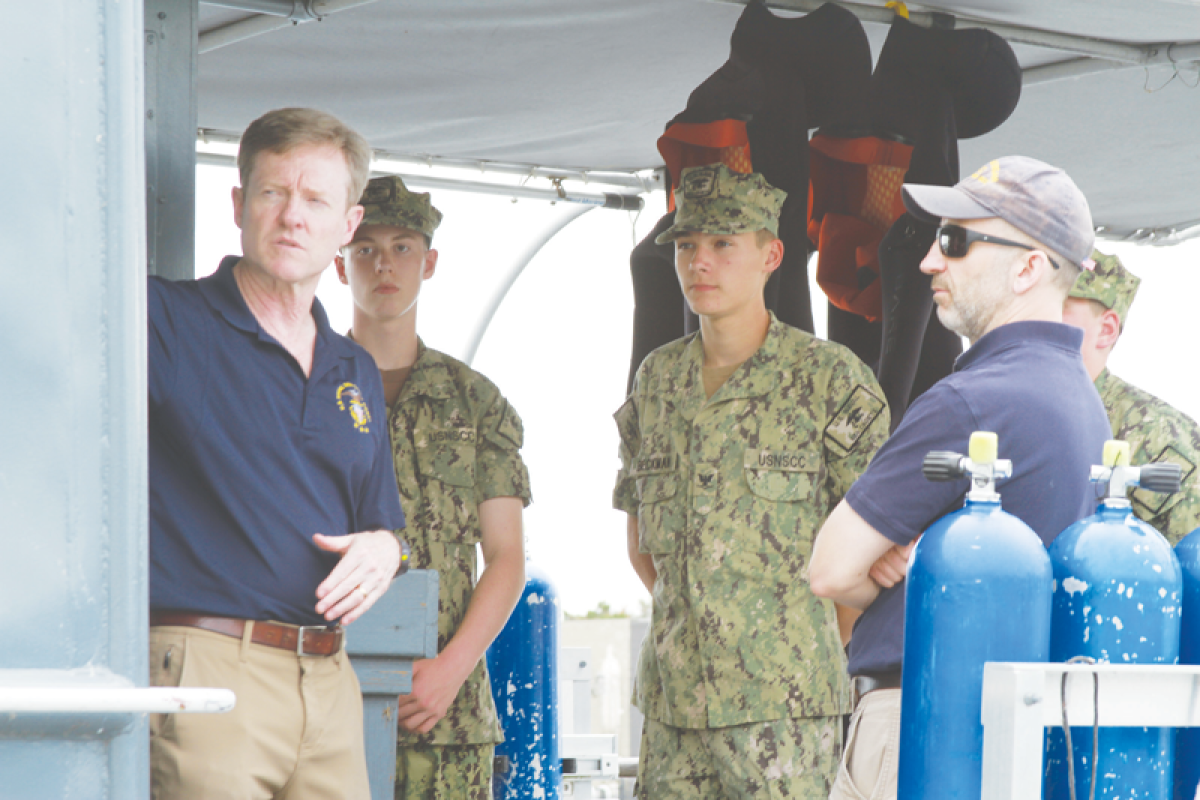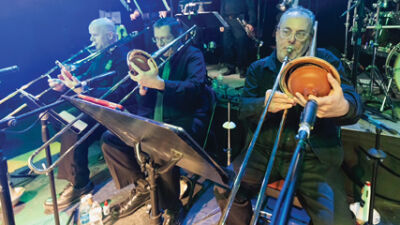
The Pride of Michigan is the main vessel operated by the United States Naval Sea Cadet Corps’ Great Lakes Division. Acquired in 1989, it is the second ship used by the organization.
Photo by Dean Vaglia
HARRISON TOWNSHIP — Ahead of an excursion to Lake Huron to search for remnants of World War II history, local Sea Cadets got to meet with the organization’s top executive.
The United States Naval Sea Cadet Corps is a U.S. Navy-sponsored organization that works to prepare young adults ages 13-17 with maritime skills in line with organizations like the Navy and United States Merchant Marine. Locally, the USNSCC’s Great Lakes Division operates out of Harrison Township with the Pride of Michigan, a converted 80-foot-long training ship that is currently equipped for research voyages and scuba diving. The Pride of Michigan was acquired in 1989.
“In the beginning, I started working with Cranbrook and Oakland University,” said Luke Clayburn, captain of the Pride of Michigan. “We were putting botanists off on islands and they were going off and collecting rare and endangered species of plants because they were separated from the mainland. Then we got involved with Oakland University and Dr. Doug Hunter, and his interest was zebra mussels and what those were going to do to the native clams in the Great Lakes. So, we set up a program where we’d take cadets out and they’d dive down to collect clams and bring them back, and he did the studies on that.”
The Great Lakes Division continued to support research with the cadet-crewed ship, moving from the zebra mussels to helping University of Arizona researchers study submerged pre-Great Lakes forests, as well as working on various projects around the Straits of Mackinac.
On June 29, the Pride of Detroit set out with its young crew and adult volunteers to dive around several sites of interest in Lake Huron off the coast of the Tawas-Oscoda-Harrisville shoreline. Working alongside Wayne Lusardi, a state maritime archaeologist, the cadets will confirm whether several underwater features discovered by the National Oceanic and Atmospheric Administration are rocks or part of crashed airplanes used by Tuskegee Airmen.
“These were Tuskegee Airmen flying out of Harrisville, around that area,” Clayburn said. “They crashed and are documented. If we could find something, it would be a major find.”
The Tuskegee Airmen consisted of the two first all-Black units in the Army Air Corps. Airmen from the 477th Medium Bombardment Group trained out of today’s Selfridge Air National Guard Base and Oscoda-Wurtsmith Airport near Oscoda. A total of 15 Tuskegee Airmen died during training in Michigan with a number of them doing so over water. Remnants of Lt. Frank Moody’s plane were recovered just north of Port Huron in August 2023.
In an article Lusardi wrote for NOAA, the wreckages of three planes — a Curtiss P-40F Warhawk piloted by 2nd Lt. Wilmeth W. Sidat-Singh, a Bell P-39Q Airacobra flown by 2nd Lt. William E. Hill and a Vultee BT-13A Valiant piloted by 2nd Lt. Nathaniel Milton Hill with weather observer 2nd Lt. Luther Linson Blakeney as a passenger — are known to be in Lake Huron but have yet to be located. The cadets aim to find traces of these planes, or at least narrow down the search area.
As cadets were loading the Pride of Michigan on June 28, USNSCC Executive Director Andrew Lennon stopped by. Speaking with the cadets and chaperones, the retired Navy rear admiral learned more about the Great Lakes Division as part of a trip visiting Sea Cadets training across the United States and territories.
“We have so many wonderful trainings and they’re all a bit different and they all have different qualities about them,” Lennon said. “What’s really unique about this one is that the Sea Cadets get to go out on the water on a ship. These are Sea Cadets at sea. It is so important for our program to teach maritime and nautical skills, and this certainly is the very best way to do it — actually on board a vessel.”
Clayburn, who has been involved in the Great Lakes Division for about 50 years, said it was the first time such a high-ranking member of the USNSCC visited the division.
“It’s a pretty major event for what we’re doing with young people,” Clayburn said. “Our training program is what is creating the people who will be buying boats in the future. We’ve had great success with kids doing very well.”
Using skills learned through the Sea Cadets program, members of the Great Lakes Division have gone onto careers in the maritime and military industries, including naval and aerospace applications.
The Pride of Michigan is normally docked outside of the North Star Sail Club along South River Road in Harrison Township. More information about the division can be found at greatlakesdivision.org and information about the ship’s owners, the Noble Odyssey Foundation, can be found at nobleodyssey.org.
 Publication select ▼
Publication select ▼
























